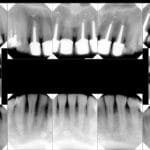Dealing with persistently dry, scratchy eyes? You might have Meibomian Gland Dysfunction (MGD), a common cause of dry eye. This comprehensive guide covers everything about LipiFlow—what it is, its effectiveness, potential costs, benefits, risks, and alternatives. We’ll explore how LipiFlow addresses the root cause of evaporative dry eye and help you determine if it’s the right choice for you.
Understanding Dry Eye and MGD
Dry eye often stems from Meibomian Gland Dysfunction (MGD). Meibomian glands in your eyelids secrete oils that mix with tears to prevent evaporation. In MGD, these glands become clogged, reducing oil production and leading to tear instability and dry eye symptoms.
What is LipiFlow?
LipiFlow is an in-office procedure designed to treat MGD. Using controlled heat and gentle pulsations, it unblocks meibomian glands, restoring the natural flow of oils crucial for tear film stability. The 12-minute procedure is performed in your eye doctor’s office.
How Does LipiFlow Work?
A small, specialized device is placed on your eyelids, delivering precise heat and intermittent pressure to unclog the meibomian glands. This process helps restore the healthy flow of oils that keep your tears balanced and your eyes comfortable.
Is LipiFlow Right for You?
If artificial tears provide insufficient relief from persistent dry eye, LipiFlow may be a viable option. A comprehensive eye exam, including an assessment of your tear film and meibomian gland health, is essential to determine your candidacy.
Potential Benefits of LipiFlow
LipiFlow targets the root cause of evaporative dry eye—MGD—rather than just managing symptoms. Many patients report significant and long-lasting relief (sometimes a year or more), reducing their reliance on artificial tears. However, individual results may vary.
Costs and Potential Risks of LipiFlow
LipiFlow typically costs between $700 and $1,500 per eye, with insurance coverage rarely available. While generally safe, minor temporary side effects like mild eyelid tenderness or redness may occur.
Alternatives to LipiFlow
Other MGD management strategies include warm compresses, lid scrubs, and omega-3 supplements. These can be used alone or in conjunction with LipiFlow, depending on the severity of your condition and your doctor’s recommendations.
Comparing Dry Eye Treatments
| Treatment | Description | Potential Benefits | Potential Drawbacks |
|---|---|---|---|
| LipiFlow | In-office procedure using heat and pulsation to unclog meibomian glands. | Addresses the root cause of MGD, potentially long-lasting relief (6-24 months). | Higher cost, possible mild side effects, may not be suitable for all. |
| Warm Compresses | Applying warm compresses to the eyelids. | Affordable, easy to do at home, can provide some relief. | Time-consuming, may not be effective for more severe cases. |
| Lid Scrubs | Cleaning the eyelids with specialized cleansers. | Improves eyelid hygiene, may reduce some symptoms. | Requires consistent effort, may not address underlying blockage. |
| Omega-3s | Dietary supplements or increased intake of omega-3-rich foods. | May support overall tear film health, general health benefits. | Results can vary, not a rapid solution. |
| Artificial Tears | Over-the-counter lubricating drops. | Provides temporary relief from dryness. | Does not address the underlying cause of dry eye. |
Maintaining Long-Term Eye Health
Even after LipiFlow, maintaining healthy meibomian glands requires consistent lid hygiene, a balanced diet, and regular eye check-ups. This helps prevent future MGD flare-ups and promotes long-term eye comfort and health. Ongoing research suggests that combining LipiFlow with other treatments like intense pulsed light (IPL) therapy may enhance and prolong relief.
How Much Does LipiFlow Cost?
LipiFlow typically costs between $700 and $1,500 per eye, and insurance coverage is rare. Factors influencing cost include location, the severity of your dry eye, and your doctor’s fees. While a significant investment, consider the potential long-term savings from reduced reliance on artificial tears and other dry eye remedies. Explore financing options like CareCredit or payment plans offered by some clinics. Alternative treatments like intense pulsed light (IPL) therapy and BlephEx offer varying price points and effectiveness.
How Long Does LipiFlow Last?
LipiFlow provides temporary but often significant relief from dry eye, typically lasting 6 to 12 months, with some individuals experiencing relief for up to two years. Factors influencing duration include MGD severity, age, overall health, and lifestyle. While not a permanent fix, LipiFlow addresses the root cause of evaporative dry eye by restoring natural oil flow.
| Treatment | Description | Duration of Effect |
|---|---|---|
| Artificial Tears | Lubricates the eyes, providing temporary relief from dryness. | Short-term |
| Warm Compresses | Helps soften and express clogged oil in the meibomian glands. | Short-term |
| Lid Scrubs | Cleanses the eyelids, removing debris and excess oil. | Short-term |
| LipiFlow | Clears blocked meibomian glands, restoring natural oil flow. | 6-24 months |
Maintaining good eye hygiene with warm compresses and lid scrubs after LipiFlow, along with a healthy diet, can help prolong its effects. Regular eye check-ups are essential for ongoing management and adjustments to your treatment plan.
What are the Disadvantages of LipiFlow?
While effective for many, LipiFlow isn’t a guaranteed solution for everyone. Some experience minimal or no improvement. It is generally unsuitable for individuals with severe dry eye, who may require alternative treatments. Potential, though typically temporary, side effects include irritation, blurred vision, and light sensitivity. The cost, often not covered by insurance, is a significant consideration. Furthermore, the relief provided by LipiFlow is not permanent, and repeat treatments may be necessary. A Cochrane review suggests LipiFlow performs similarly to other dry eye treatments, though with no reported adverse effects. Consulting with your ophthalmologist is crucial to discuss your individual circumstances, weigh the pros and cons, and determine the most appropriate treatment strategy.
Learn how long Dilaudid stays in your system by exploring our comprehensive guide here.
- Understanding the La Michoacana Model: It’s Not a Franchise, But Here’s How It Works - December 20, 2024
- Finding the Right Little Rascals Daycare: A Parent’s Guide to Locations, Programs, and Curriculum - December 20, 2024
- Decoding InstaSpace: A Deep Dive into its Diverse Ecosystem of Services - December 20, 2024















